How can I successfully change my cat’s diet? These days, we’re not just aware of the importance of a healthy diet for ourselves, but also for our precious fluffy friends. To get your cat eating healthy, nutritious food, you may need to change their diet. Cats don’t always like change (to put it mildly), but follow these rules and they’ll be purring with pleasure at their new food in no time.
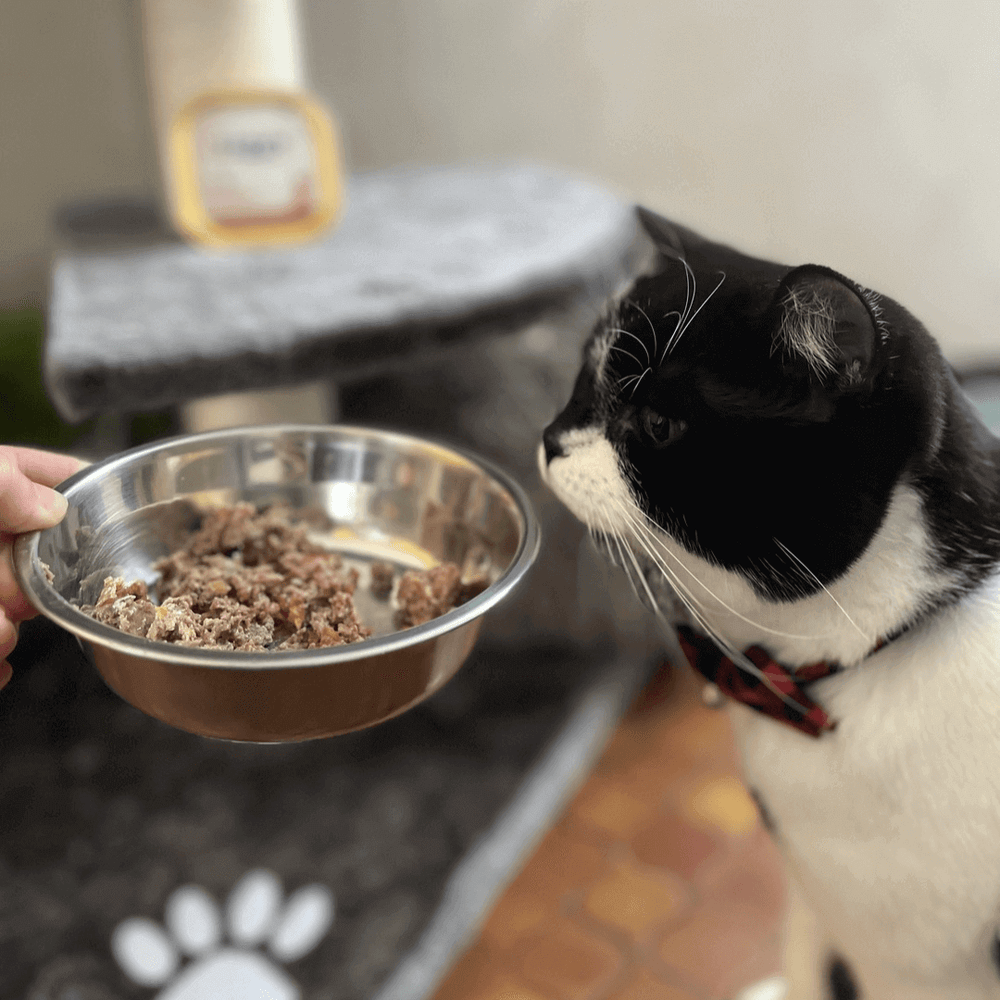
Cat food: why make a dietary transition?
The choice of feline food on the market is so vast that it offers many possibilities. There are two main types of food: wet food (pate, terrine, bites in sauce) and dry food (kibble). To this we can add the home-made ration, which is increasingly popular in some homes.
Food transition consists of moving from one food to another , gradually including the latter in your cat's current diet. This may involve a change in the type of food (dry, wet, household or mixed), or a change in the ingredients that make it up. As soon as we make a change in the type of food, range, food, brand or ingredients, we can talk about food transition.
The digestive flora of our cats is accustomed to a stability or diversity of the foods that we give them. When changing their diet, their food, a dietary transition is desirable. A change that is too abrupt could trigger diarrhea or vomiting in some cats. In addition, our cats have a very particular characteristic, they are neophobic. ..That is to say, they have a natural tendency to be wary of change.
Before starting my cat's food transition
Here are some basic rules before changing your cat's diet:
It is essential to adapt to the rhythm of His Majesty. Some cats will have no difficulty in changing their diet or food. For others, an adaptation period will be necessary (up to two to three weeks, for the most resistant).
Keep in mind that it is best to avoid changing your cat's diet (kibble and wet food) following a stressful event such as a trip to the vet, a move or the arrival of a new animal at home. Your cat may associate its new diet with a negative event.
It is important to weigh your cat and track his weight.
During the transition, monitor your pet's stools . This is an effective way to determine if their digestive system is tolerating the food transition well until the food is accepted.
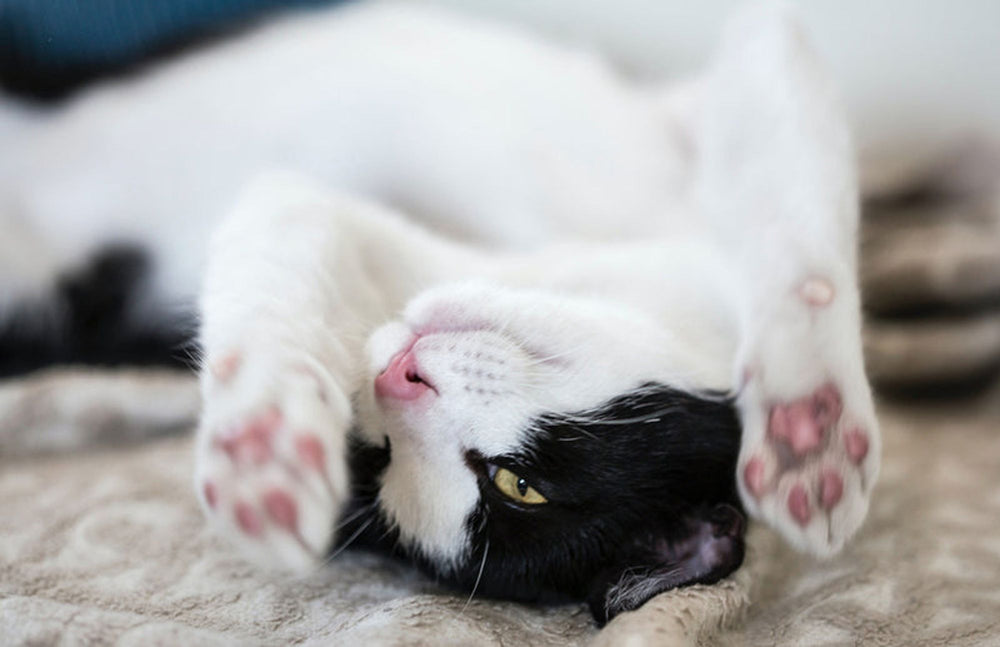
How can I successfully transition my cat’s diet?
Step 1
On the first day of the transition, during one meal only, mix 10g of the new food into your cat's usual ration (kibble or pâté). If your cat is not reluctant to introduce this new food, you can go straight to the second step. However, if your cat does not eat its ration, do not worry. Start again the next day and the following days, with this same small amount during a meal, until it is well consumed.
Step 2
When the first step is validated by your cat, you can double the quantity of the new food, going to 20g, or you can divide this same quantity over two meals.
Step 3
Keep this rhythm over the days, until the old food is replaced . This can take several days, or a few weeks. Consider gradually reducing his old food. For example, for a food transition from kibble to pâté: for a teaspoon of pâté (10g), reduce the quantity of kibble by 2 to 3g. For 50g of the new pâté, reduce the quantity of kibble by 10 to 15g.
At the same time, continue to monitor your cat's stools to ensure that the adaptation is taking place properly.
My cat is sulking at its food bowl: what should I do?
Some cats may actually refuse their new food.
Here are some tips and tricks to help you get your cat back to eating:
- Try to stimulate your cat by playing with him before feeding him, this appeals to his hunting instincts. Food then comes as the reward for this hunt. Thus, this game will open his appetite and allow him to release endorphins, hormones of well-being.
- Give him his new food in good conditions: in a clean, shallow bowl (so that his whiskers don't get wet), and preferably at room temperature.
- If your cat refuses to taste its pâté, you can put a little on its paw . By reflex, it will lick it while grooming itself and will begin to familiarize itself with its smell and taste.
- In the first few days, try to mix the new food with a food that he likes. For example: a small amount of tuna juice, a little olive oil, yogurt or milk (only if your cat is not lactose intolerant), a small amount of grated cheese or a drop of salty soy sauce...
Another idea: you can vary the texture by crushing his new food a little or adding a tablespoon of water to make a little juice.
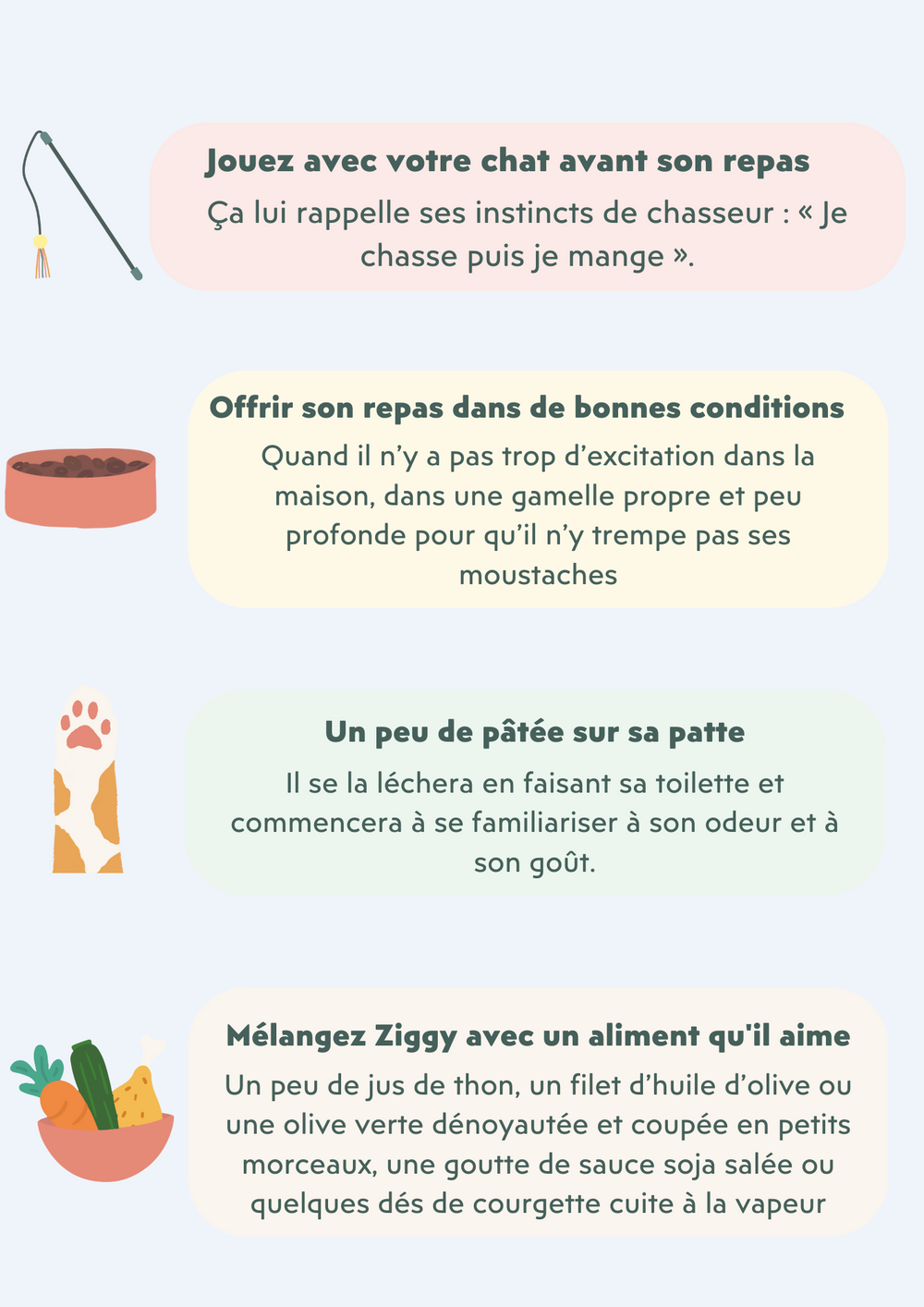
Dietary transition in cats: what to do next?
Once the transition period is over, your cat will be able to fully benefit from the benefits of its new diet.
If you choose to eat a mostly wet diet and are away from home during the day, here are some recommendations:
Feed two meals in the morning : for example, one when you get up and one before you leave for work.
Eat two to three meals in the evening : for example, one when you get home from work, one after dinner and one before going to bed.
Finally, you can leave your cat a small amount of kibble (10g) in a toy or an anti-gluttony bowl , in order to stimulate it during the day by satisfying its hunting instincts.
Questions? Need personalized support? Do not hesitate to contact us at hello@ziggyfamily.com
In summary
Find all our advice in our video!


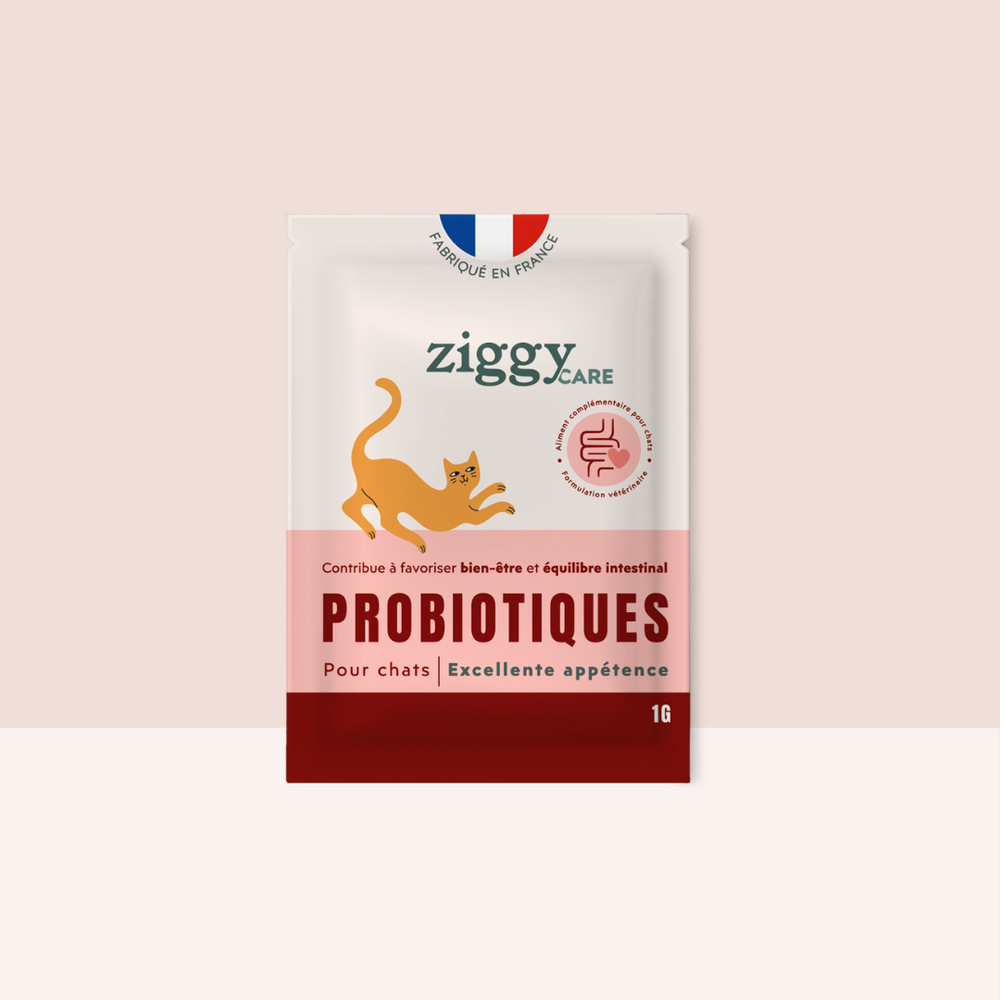
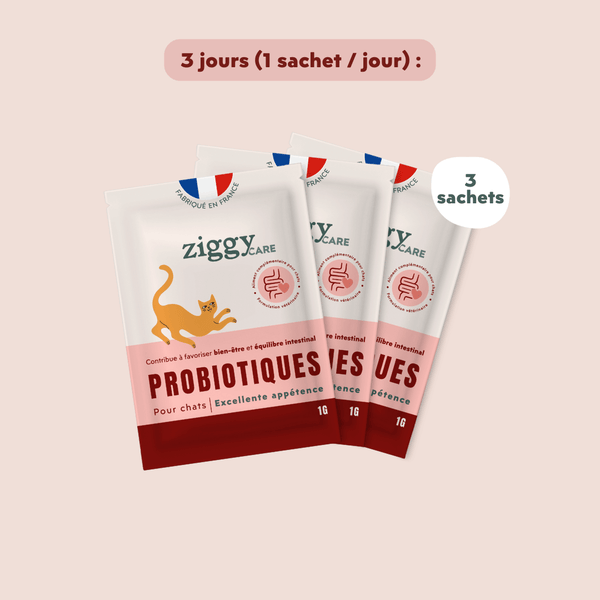

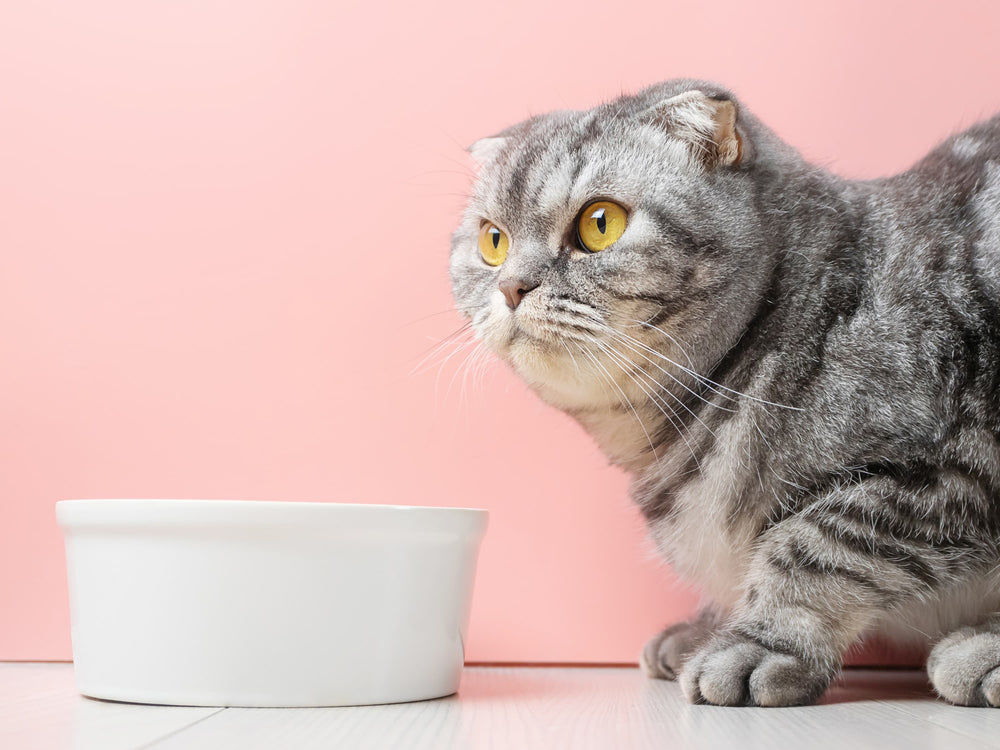
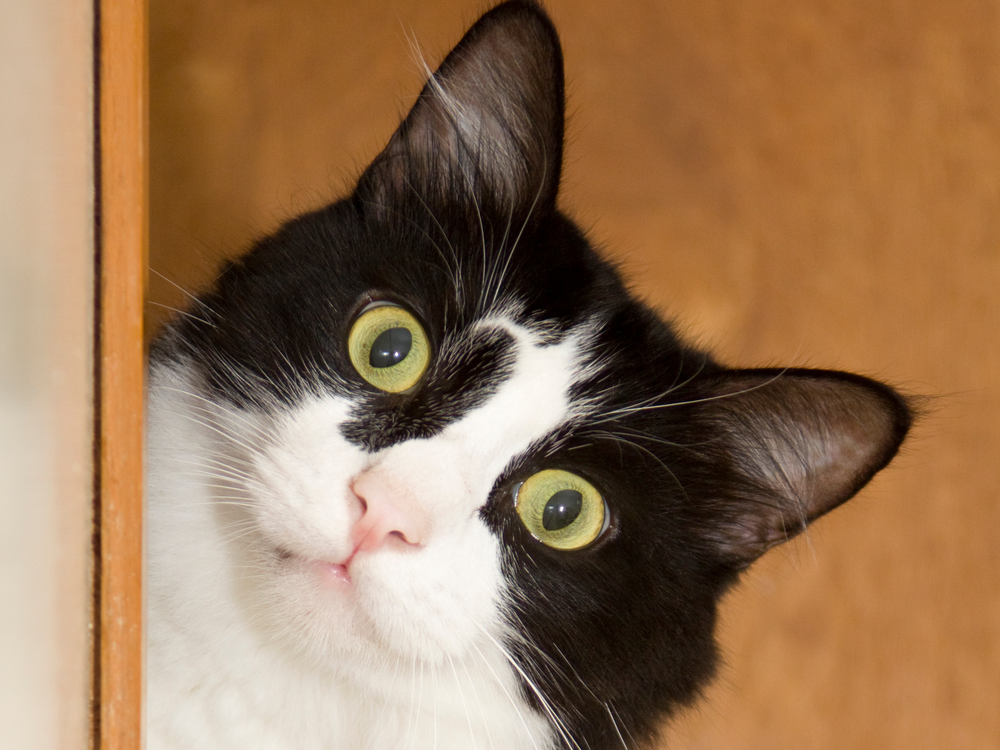
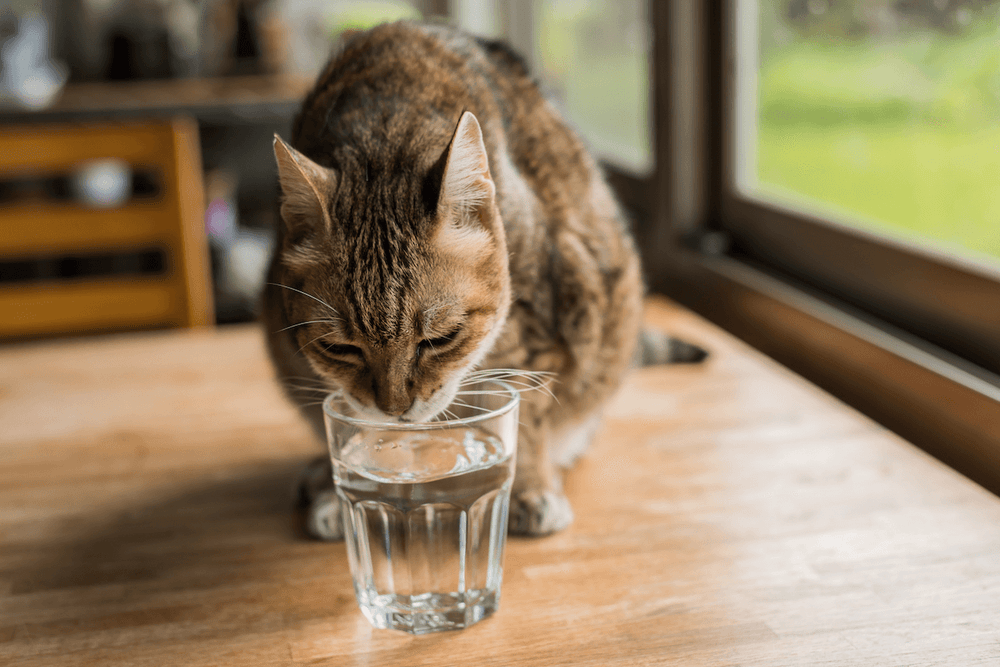
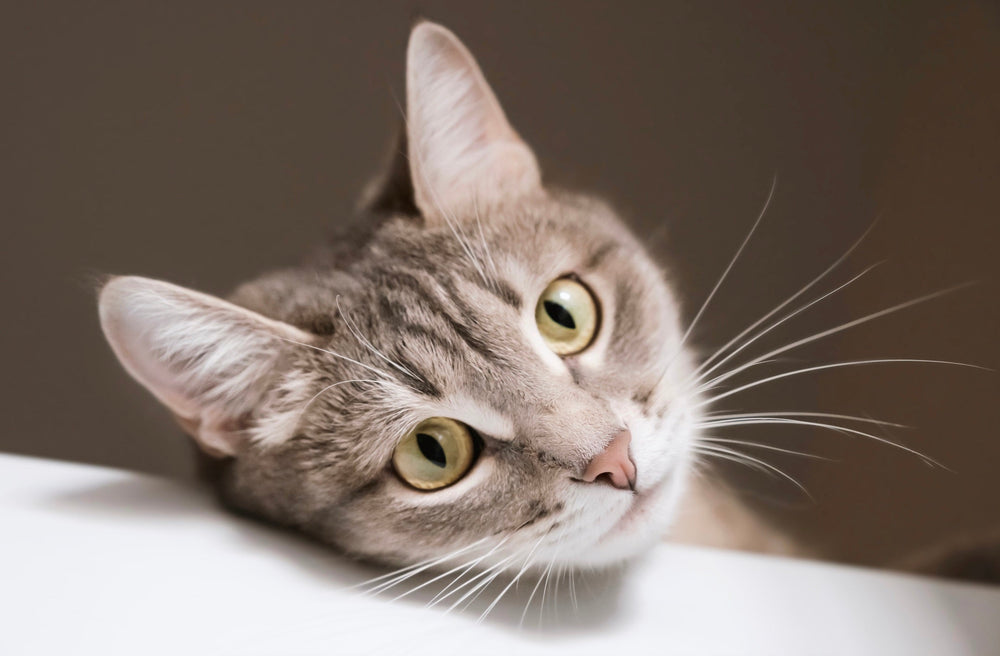
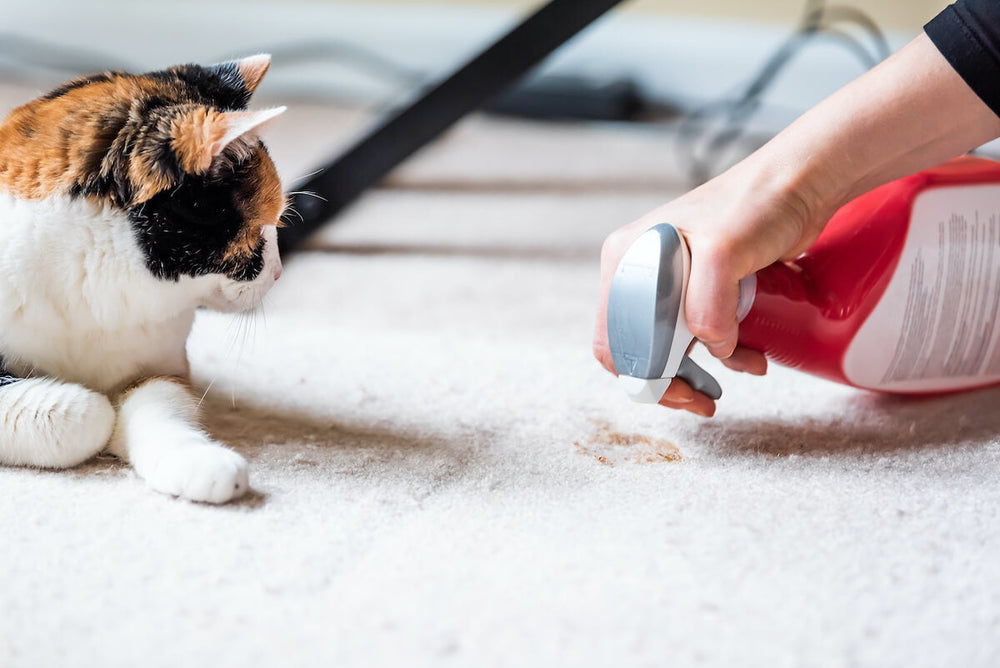


Bonjour,
Joyeux anniversaire à votre petite moustachue. 😻
Si votre minette est habituée aux recettes Ziggy depuis chaton, vous pouvez lui offrir directement notre gamme adulte. La composition est sensiblement la même. 😺
N’hésitez pas à nous contacter à hello@ziggyfamily.com si vous avez d’autres questions. Nous serions ravis de vous aider.
Plein de caresses à votre minette.
L’équipe Ziggy
Bonjour,
Ma minette vient d’avoir 1 an
J’ai commandé des pàtées chat adulte stérilisé.
Ma question ; dois-je faire une transition alimentaire entre les pâtées chaton ziggy qu’elle consomme actuellement et les pâtées adulte ?
Bonjour,
Merci pour votre commentaire. 💛
On espère que votre petite moustachue va bien.
L’introduction d’une nouvelle alimentation, et encore plus lorsqu’elle est saine et spécifiquement formulée pour une pathologie comme le diabète, peut être longue. N’hésitez pas à suivre cette transition de manière douce et progressive, en utilisant quelques astuces pour faire apprécier la pâtée à votre chatte, comme en lui offrant quelques dés de courgette cuite ou en mettant un petit filet de jus de thon à sa pâtée. Si votre minette boude toujours sa pâtée Ziggy Diabète, n’hésitez pas à nous contacter directement par email à hello@ziggyfamily.com. On pourra vous aider à trouver d’autres solutions.
Prenez soin de votre petite senior. On lui fait plein de caresses. 😽
L’équipe Ziggy
Bonjour,
Ma minette est diabétique. Elle a bientôt 18 ans. Lui trouver une alimentation qui lui plaise, relève du combat. J’ai essayé votre patée. Malheureusement, elle n’aime pas le porc, mais que le poulet. Mon vétérinaire, ne m’a pas informé de la transition, mais, m’a fait peur. Il m’a demandé de changé de suite d’alimentation.
Je n’entends que du bien de vos patées. Je ne perds pas espoir qu’elle les mange.
Leave a comment